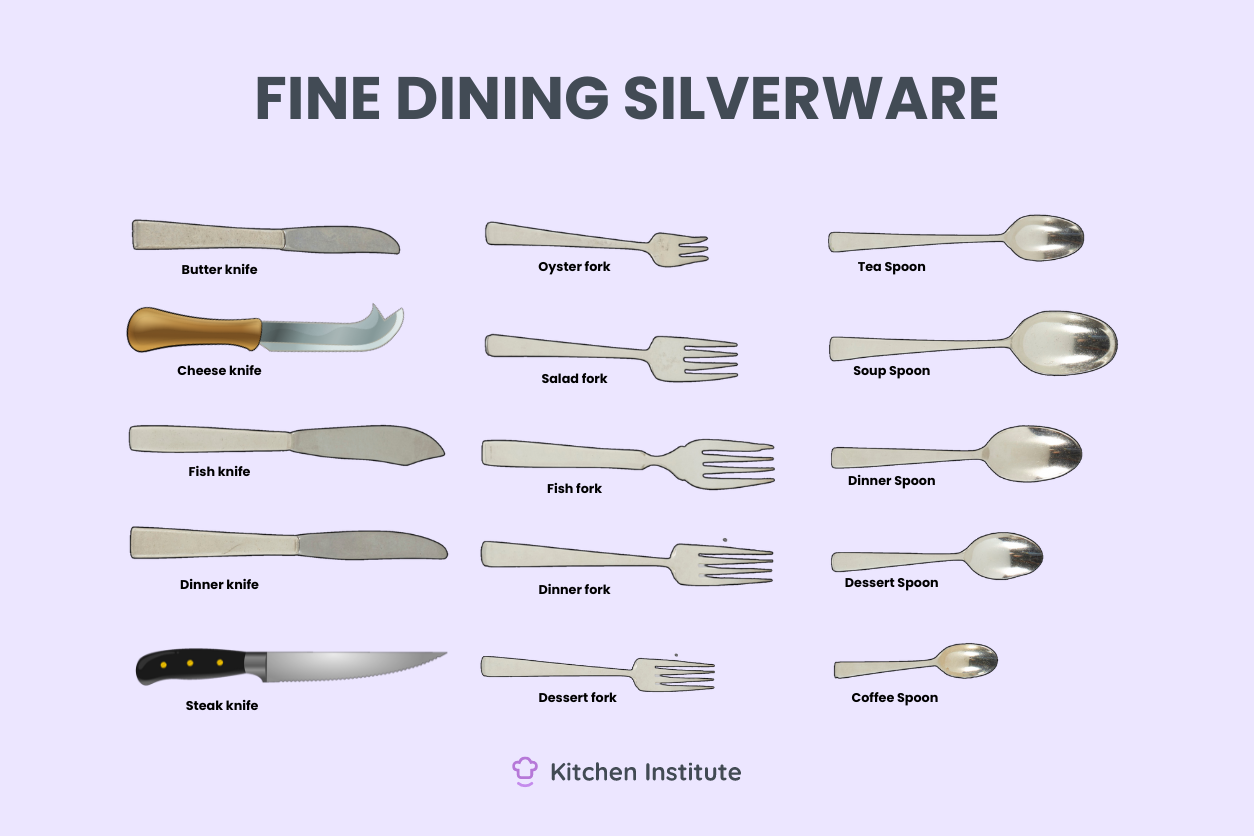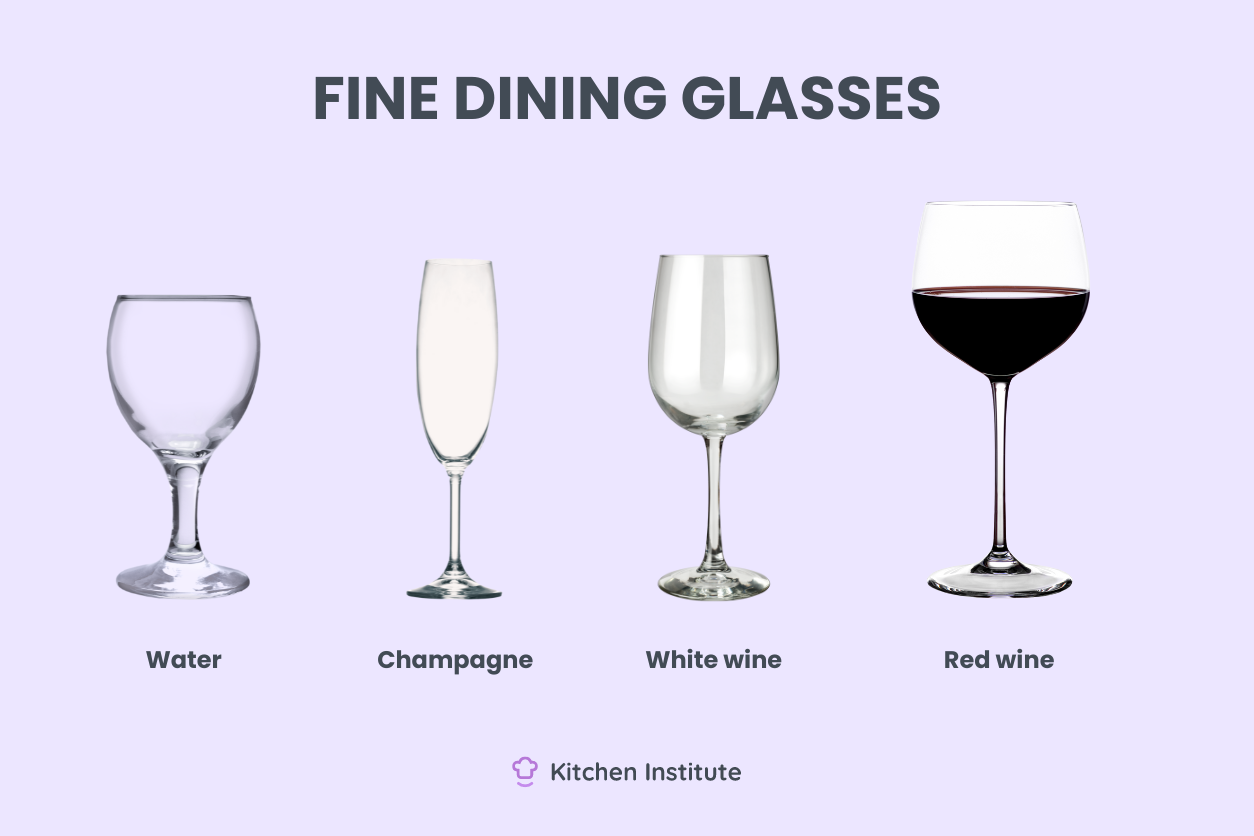Cutlery Etiquette and Table Manners While Fine Dining

Formal dinners can be a bit intimidating. You’re all set to enjoy some great food and conversation, but then you’re faced with a table full of silverware that seems to have a mind of its own. Many of us have faced the anxiety of dining etiquette and the fear of accidentally using the fish fork to eat dessert—hey, if it has happened to me, it can happen to anyone.
The truth is, fine dining etiquette is less about strict rules and more about making sure everyone, including yourself, has a pleasant time. Let’s talk about some common mistakes people make with cutlery and table manners at these events and how you can easily avoid them.
Related: How to Set a Table for Any Occasion
What the Fork Do I Use?
We’ve all had that moment when, mid-meal, you’re unsure whether to reach for the fork with three prongs or four.
Is this the salad fork or the dessert fork?
Do I use this for the appetizer, or am I about to commit an etiquette crime?
It’s like being in a cutlery game show where the prize is your dignity.

Here’s a simple trick: start from the outside and work your way in. Those utensils are placed in the order you’ll use them, with the first course utensils on the outside. So, if you’re having a salad before your main course, use the outermost fork first. The same goes for the soup spoon; if it’s on the far right, it’s your first tool of the trade. It’s almost like the cutlery is guiding you through the meal.
Now, let’s talk about holding your cutlery. Imagine you’re elegantly fencing a tiny steak or gently slicing through a cloud-like dessert. Your knife should sit comfortably in your dominant hand, while your fork stays in the other hand. This isn’t a wrestling match; think of it as a gentle, synchronized dance. If you’re a lefty or feel awkward about it, practice at home until it feels natural. No one needs to know you spent a week dining with imaginary friends.
In American dining, you switch your fork to your dominant hand after cutting your food, whereas, in the Continental style, you keep your fork in the non-dominant hand. Both styles have their merits, and there’s no hard and fast rule, but whichever you choose, consistency is your best friend when it comes to handling cutlery!
Where Does the Napkin Go?
Napkins are so easily overlooked, yet they can speak volumes about your table manners. For starters, when you sit down, place the napkin on your lap—not tucked into your collar like a bib unless you want to channel your inner toddler. This isn’t a spaghetti-eating contest!
Throughout the meal, dab, don’t swipe. Lightly touch your napkin to your lips when needed, and avoid using it as a tissue or hand towel. If you need to step away from the table, lay your napkin neatly on your chair. This little gesture says, “I’ll be back”—without the Schwarzenegger intensity.
Once the meal is over, loosely fold your napkin and place it to the left of your plate. No need to fold it back into a swan or any fancy shape; your host just needs to know you’re done, not that you have a side gig in origami.
Elbows on or off the Table?
Let’s address a common conundrum: where to put your elbows. While it might be tempting to lean in with your elbows planted firmly on the table, it’s best to keep them off while eating. It’s not just about space—it’s about showing interest and respect for your dining companions. Save the elbow resting for in-between courses when you’re deep in conversation about that amazing vacation you had or the latest book you couldn’t put down.
Where to Put Your Glass?

Figuring out which glass is yours can be tricky when you’re faced with a bunch of them lined up on the table. A simple way to remember is to think “BMW”—your Bread plate is on the left, your Meal plate is in the center, and your Water glass is on the right. This little trick can help you steer clear of accidentally grabbing someone else’s drink.
Speaking of glasses, they often come in different shapes. If you’ve ever wondered why, here’s a quick guide: the taller, narrower glasses are for white wine, while the rounder ones are for red. The idea is to enhance the wine’s aroma and flavor, but for most of us, it’s about enjoying the moment.
Remember, You’re Not in an Eating Contest!
Dining is as much about the experience as it is about the food. One common mistake is not pacing yourself with the rest of the table. Eating too quickly might leave you awkwardly waiting while others finish, and eating too slowly can delay the entire course. Try to sync your pace with your fellow diners as much as you can, but honestly, there is no pressure; go with the flow!
In smaller gatherings, wait until everyone has been served before you start. In larger groups, it’s usually okay to begin eating once those around you have their plates, especially if the host encourages you to do so. This shows consideration and respect, making the meal more enjoyable for everyone.
When eating in groups, conversation is key. Engage with your dining companions, ask open-ended questions, and enjoy the company as much as the meal. The best part of any dinner is often the shared stories and laughter that accompany it!
Our Recipe for Trust: Why Choose Kitchen Institute
At the Kitchen Institute, we're dedicated to providing reliable and accurate information on cooking trends, tips, and product reviews. Our team of passionate food enthusiasts ensures that every piece of content is thoroughly researched and based on real-world experience. We pride ourselves on our comprehensive and unbiased product reviews, rigorous research processes, and commitment to staying current with the latest culinary innovations. Trust us to enhance your culinary journey with quality insights and practical advice.